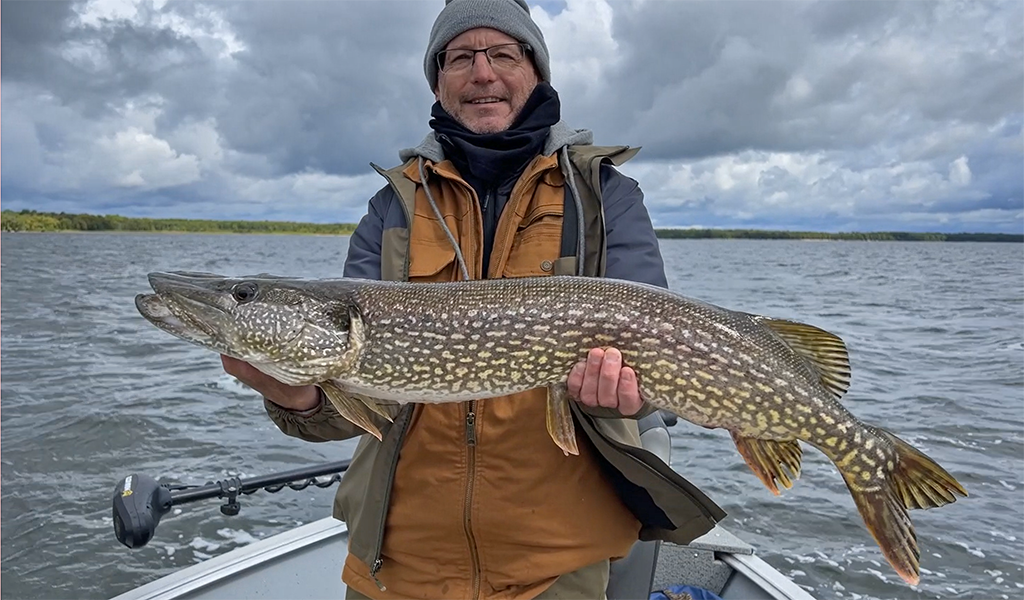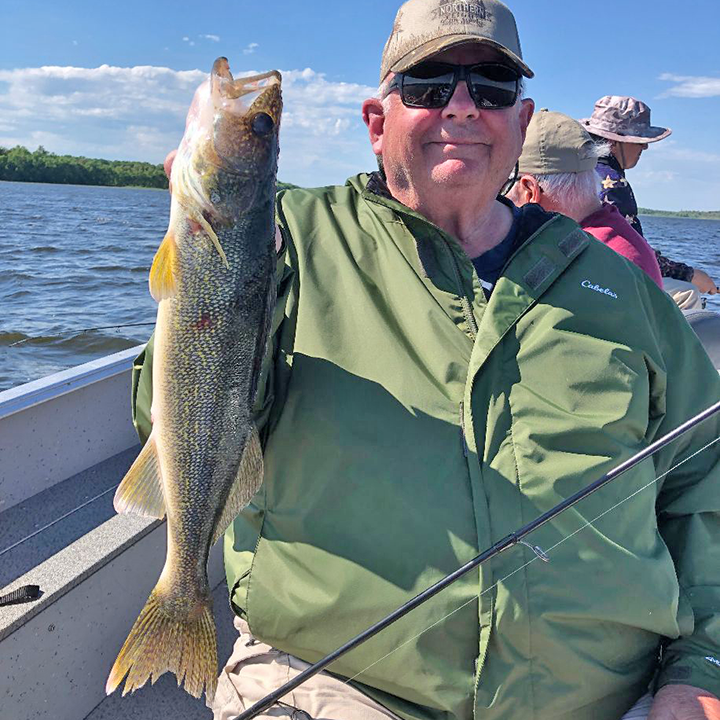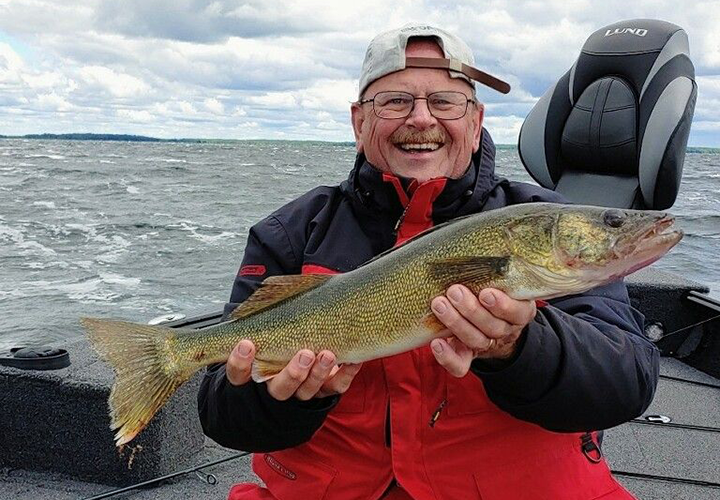Mid-Summer fishing patterns have developed on both Winnie and Cutfoot. With rising water temperatures, fish are more prone to strike faster moving lures, so finesse techniques for walleyes are out, and aggressive, trolling and casting presentations are in.
Panfish, perch and pike, as many of our guests are learning, actually come along as a by-product of trolling for walleye. The species that we catch depends on which area of the lake we’re fishing. Head out onto the big lake and troll the flats with bottom bouncers and the mix will be pike, perch, and walleye.
Move into Cutfoot and begin trolling the weed edges with spinners and the mix will broaden, sunfish, crappie, rock bass and even an occasional largemouth will find your offering.
Trolling, as popular as it is, isn’t the only aggressive fishing style that will trigger fish to strike during mid-summer. Gaining fast in popularity are cast-and-retrieve presentations, here’s why.
With the arrival of clear water caused by Zebra Mussels, fish, especially walleyes have become more “boat shy” than they used to be. They can still be caught, but sometimes driving the boat over them will force them to move before an anglers lure can get in front of them. Positioning your boat within casting distance, but not directly overhead will allow you to present a lure to the fish before they are alerted to your presence and therefore less prone to strike.
Locating structure is the key, cabbage patches, rock piles and sharp, well-defined points make good targets. Remember, you want your lure to arrive in front of the fish before your boat does. Unless you have the latest and greatest side-imaging technology and really know how to use it, casting toward likely structure is your best chance of finding fish. Even if it takes a few tries, have faith in finding good structure and your effort will eventually be rewarded.
Casting heavy, fast moving lures like jigging raps is one casting presentations that works, sometimes. When they work, they work great, but walleyes don’t always respond to the super- high retrieval speed that these lures require. Another more moderate casting presentation is to use jigs tipped with plastic, action style tails. Paddle tails, shad imitating lures and even large twister tails can all work. This group of lures not only allows anglers to cast good distances away from the boat, but also have an enticing action as they drop into the water column. The longer “hang-time” gives fish an extra few seconds to respond and will often produce strikes when heavy jigging lures are too much.
If you’ve never tried casting jigs with plastics, a good starting off point is to pair a round head 1/8 ounce Lindy Jig with a 3 inch Ripple Shad. Cast the lure towards the fish, let it fall and then begin your retrieve using a sweep-drop-sweep-drop motion. Remember, lures like these offer attracting power moving either up or down; be sure to offer fish plenty of drop-time.
Casting jigs and plastics will allow you to drum up some panfish action in Cutfoot right now too. Scale the lures down in size, 1/16 ounce jigs tipped with 2 inch tails will fit the bill size-wise. Everything that swims in the lake will strike these lures, so have fun experimenting.
Crappies have been stubborn during the day, but can be found during early morning and late evening. Sunfish, because of the warm weather have been more cooperative during the day, but they too show a preference for moving between late afternoon and dusk.
Perch are where we find them these days, weeds are sometimes good, rocks are good at times too and even deep mud-sand transitions hold schools of them. Trolling spinners is probably the best way to locate fish. Once you have an idea where they are, narrow down your territory and rig up with jigs, or Lindy Rigs and focus on the more tightly grouped schools of fish. When our guests find them, they catch some good size fish, average size ranges from 9-1/2 to 11 inches this summer.
Northern pike, particularly larger ones are still roaming deep water. Fishing steep structure on the lakes larger bars using live bait is probably the best way to target them. Creek chubs, large suckers or big golden shiners will all work; Lindy Rigging or slip-floats are the 2 best presentations to try. Trolling crankbaits on top of the flats is an alternative for pike as well, focus on water depths of 14 to 16 feet and troll at brisk speeds, 2.5 to 3.0 MPH. Rattle baits, shad raps, reef runners, use your imagination about which lures to try. Crawdad patterns, Firetiger, bright orange and white are all food colors, tailor your color selection to the water conditions. On rocks, crawfish patterns are great, in open water, maybe white would be better; experiment until you get the desired results.
With the Independence Day holiday behind us, we are already beginning to look forward to early fall fishing patterns. But first, there are a lot of cookouts, swimming, and water sports on the agenda. Take advantage of the great weather while you can and if you’re in the area, stop in for a chat!
















